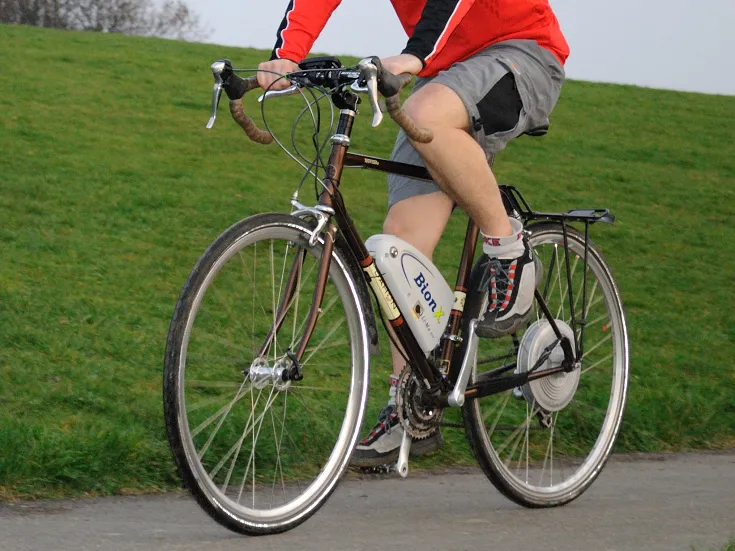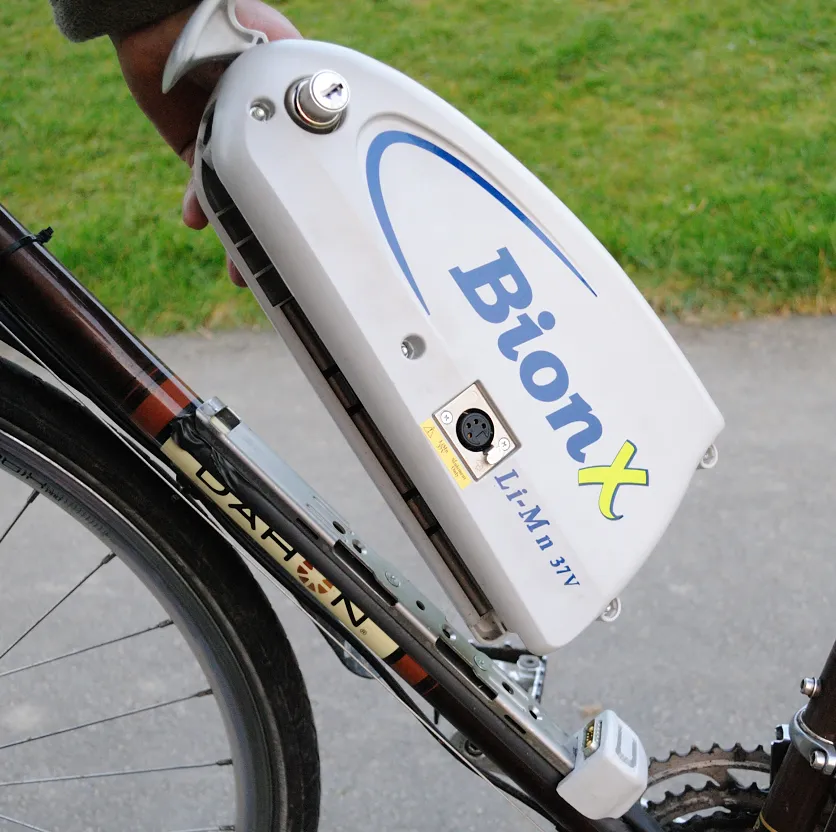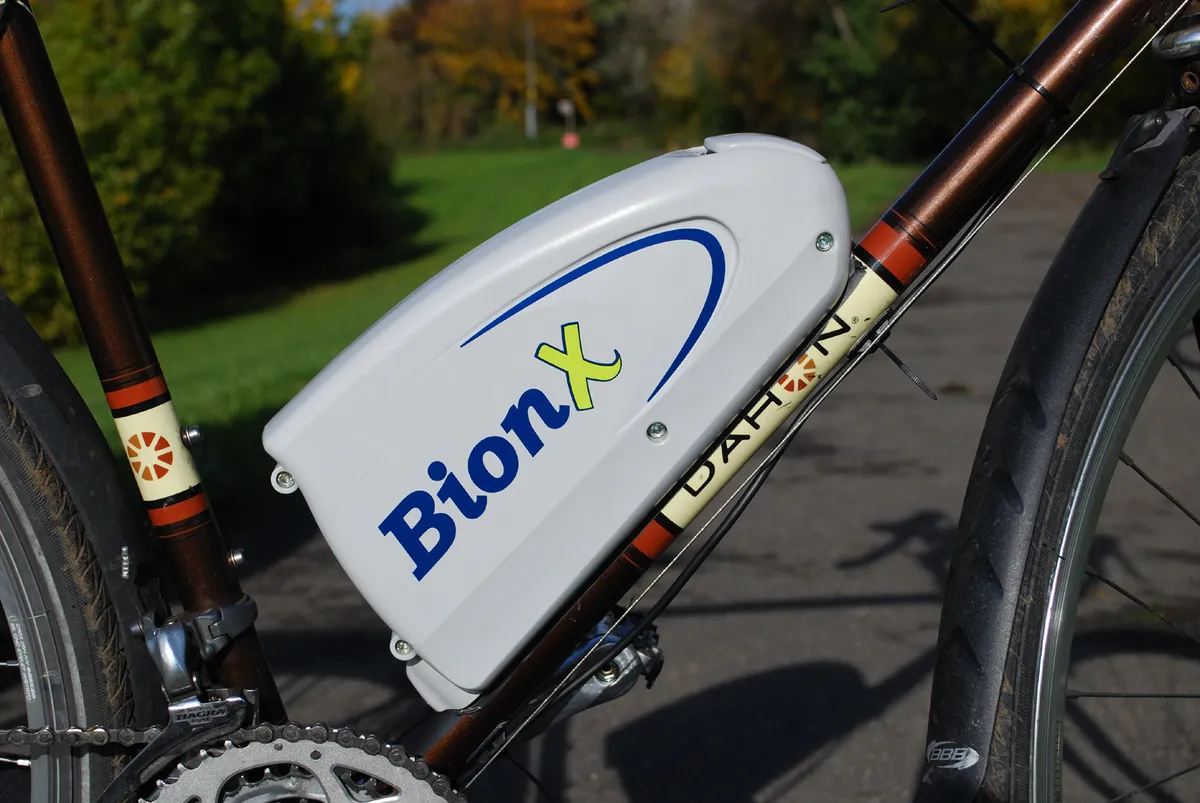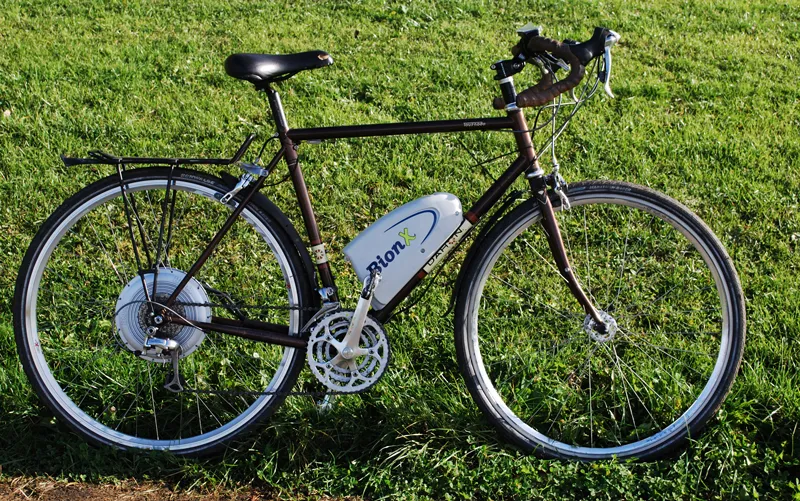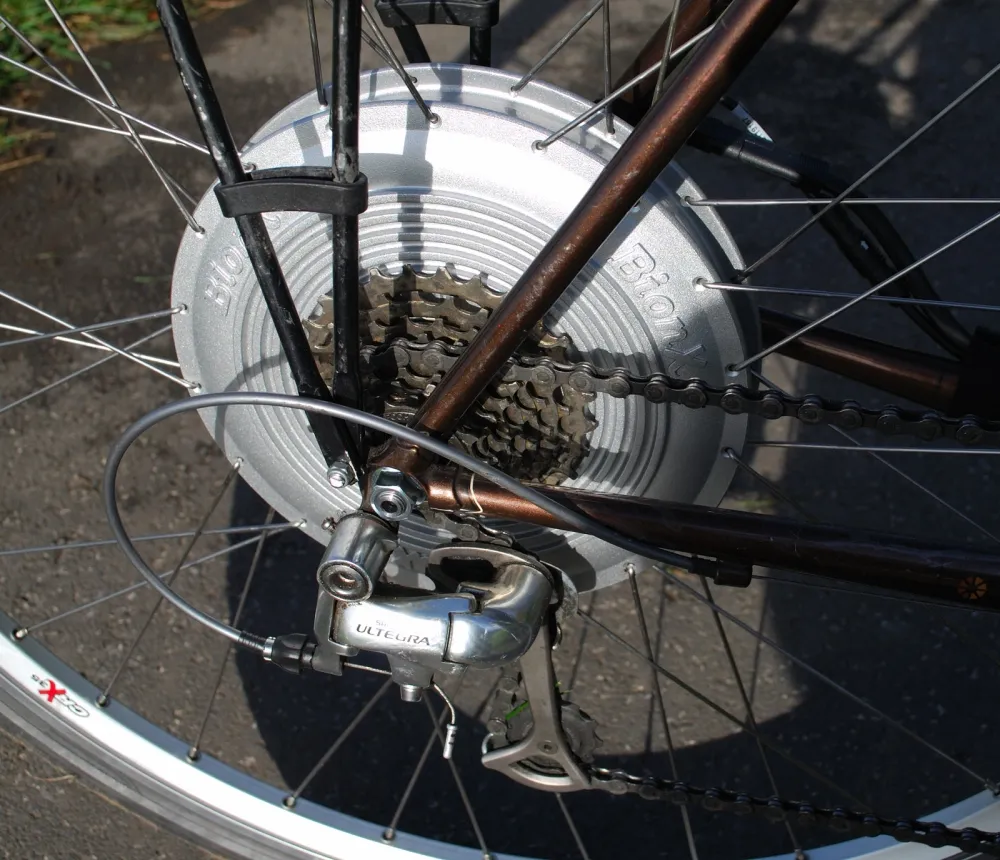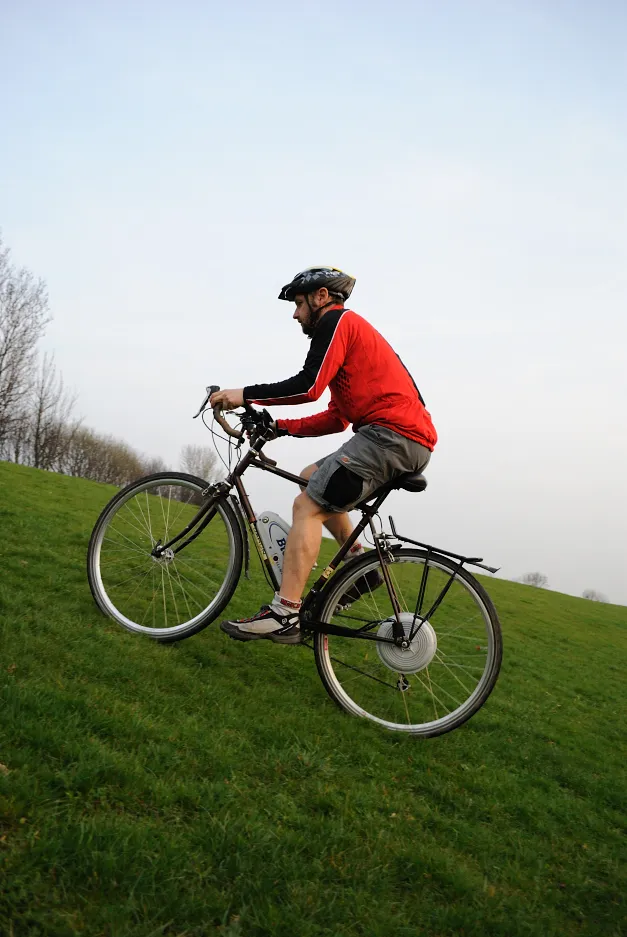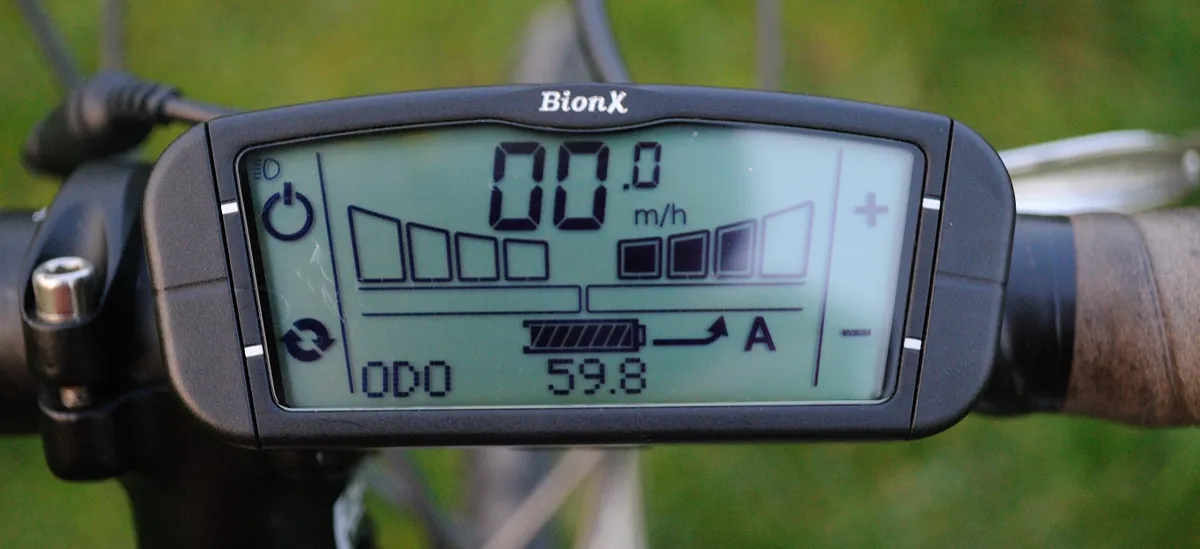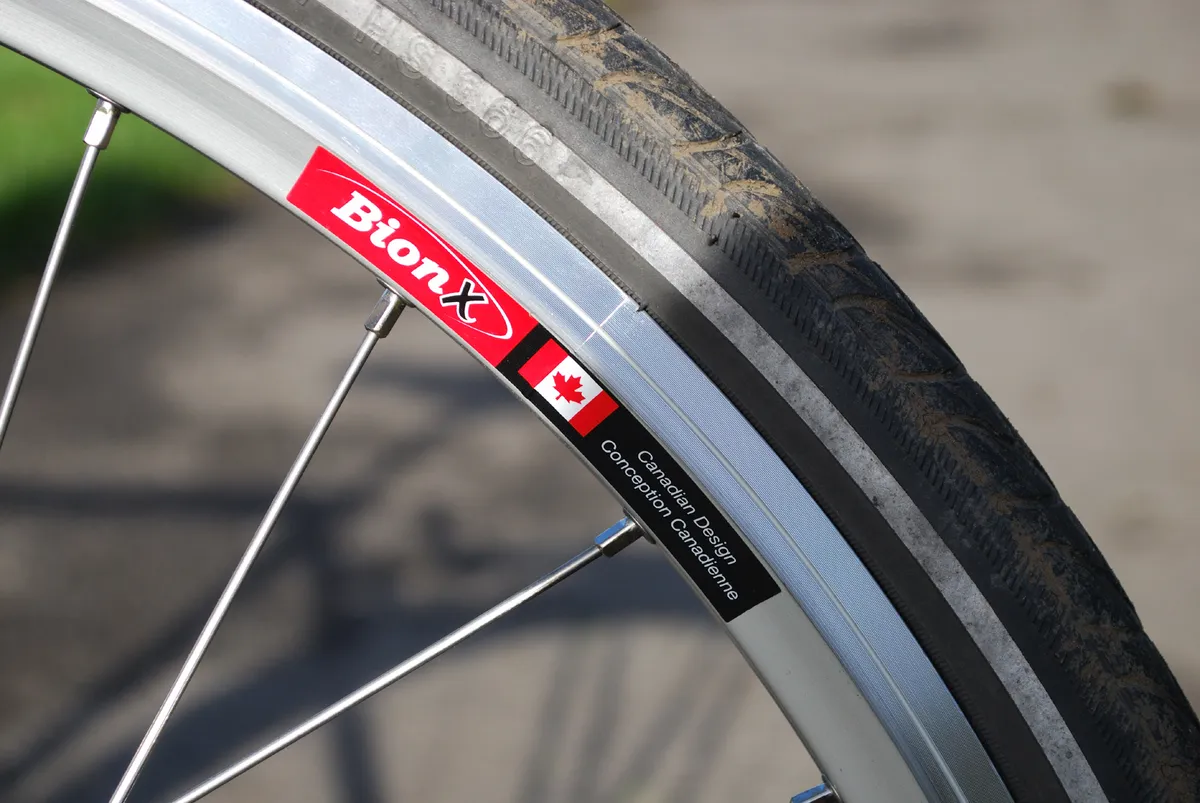Despite being a Canadian company, BionX's electric bike kits are hugely popular in mainland Europe, where they're one of the main competitors to the Panasonic crank drive system. Many bike manufacturers there have adopted this rear hub motor kit and fitted it to their own bikes as off-the-shelf models; Diamant, Focus, KTM and Reise und Muller are just a handful of the names to do so. The technology has also been adopted on the other side of the Atlantic, by the likes of Trek.
The kit
The kit consists of a relatively thin and large-diameter hub motor, ready built into a 26in or 28in wheel, that, quite unusually, has no internal gearing (ie.the motor drives the hub directly) and a sizeable lithium-ion battery with a capacity of 354Wh – about average for a good quality electric bike these days. There's also a handlebar mounted console for setting the power/regeneration level (see below), which acts as a handy bike computer (the most useful info being speed, trip length and battery charge level).
Fitting and setup requires a bit of care – you’ll need a torque wrench to make sure the back wheel is very securely fixed in the frame (if you don’t make sure the anti-turn axle groove is correctly positioned and the axle nuts tightened to 40Nm you risk the rear wheel flipping out of the frame under power). If you value your paintwork you’ll also need to put protective tape of some kind under the battery mounting plate (see below). And the last bit to pay attention to is the regenerative braking sensor that fits via a sticky pad onto the rear brake lever. This needs securing with glue of some sort – it works but seems rather a DIY approach for such an expensive kit and does need a bit of fiddling to get the exact clearance.
Our test version of the kit came with a battery that fits to the bike’s down tube using a mounting plate fixed to the water bottle bosses. This is a neat idea but those wanting to use their bike on rough stuff might consider the rack mounted option which is an inherently more secure design. The motor has a screw-on freewheel mount that will take eight- or nine-speed cassettes (you need to provide your own freewheel cassette) but unfortunately won’t take freehubs.
The system certainly uses some complex technology; it boasts regenerative capability (ie. power is put back into the battery when you brake or put the motor into regenerative mode using the handlebar console) and has smooth pedelec power delivery, courtesy of a torque sensor in the rear hub. You control the system partly through the act of riding – the more pressure you put on the pedals, the more power is delivered – but there's also a console control that allows you to set power to one of four levels (nominally 35%, 75%, 150% and 300%).
The ride
The 300% rated assist makes our test machine probably the most powerful street-legal electric bike yet tested on BikeRadar, so it’s hardly surprisingly it set a new record time on our pretty hilly test circuit, averaging nearly 17mph in the top power setting. The separate hill climb test results were equally impressive, though it didn’t quite measure up to the performance of pack leader, the Koga E-light.
However, the 300% setting is overkill for all but the steepest hills – you tend to storm up to the legal limit of around 16mph only to feel a marked slowing as the power cuts out once over the legal speed limit. Using setting two or three gives a more natural, bike-like ride and, naturally, a longer battery life. The lowest power setting is barely noticeable but would give an impressive battery range. Being a gearless motor, the BionX system creates little resistance within the hub while pedalling without the power on – a great plus, meaning it’s hard to tell you're actually pedalling an electric bike.
As this is the high torque version of the BionX kit we used a Pennine circuit with plenty of 20% gradients and sometimes more to give the top power setting a real test. The motor munched up all the hills in its way. BionX claim a of range 50 miles, which is entirely possible using the lower power settings. But using power levels three and four in terrain full of short but very steep hills we achieved around 30 miles with a 75kg rider.
Conclusion
Overall, the ride quality is impressive – smooth power with plenty of acceleration to spare to get you up the steepest of hills and a virtually silent motor (another advantage of a gearless motor such as this). However, while the BionX kit is both technologically impressive and powerful, it’s disappointing to see a battery guarantee of only a year – especially on a bike that's been around so long and in view of the very high cost of replacement batteries (£1,050 on this particular model, though less for smaller capacity ones).
Whether the regenerative braking is worth it will be a matter of opinion. In places with lots of small hills you’ll find yourself constantly fiddling with the control settings to get maximum effect, and the unnaturally strong slowing sensation activated by using the braking sensor is totally unlike the usual progressive braking you'll be used to. If you think this is worth an increase in range of only a few extra percent (estimates for the current technology are 2-5%) you might see regenerative braking as an advantage...
